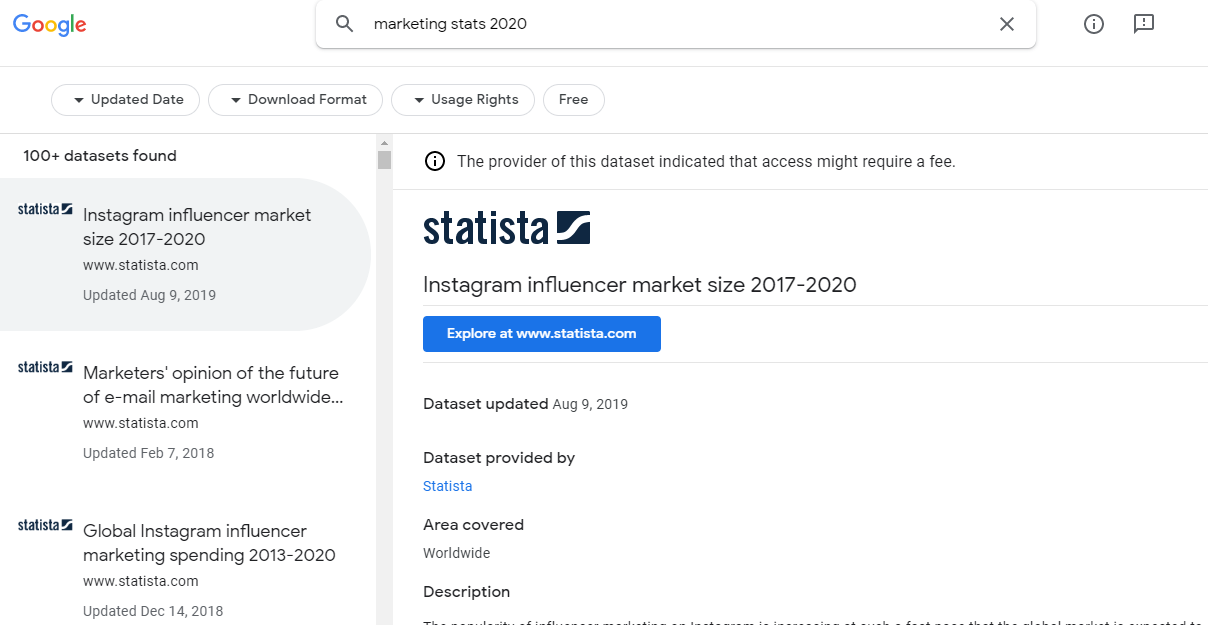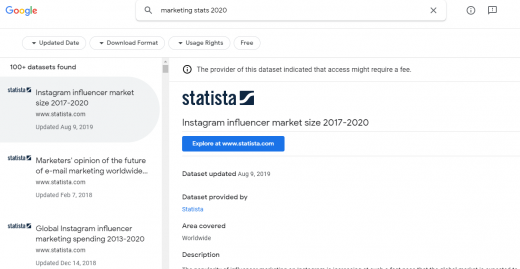What is Google Dataset? How it Can Help Your 2020 Marketing Efforts
Google released its search tool Dataset back in September 2018, which aims to deliver results for hard-data sources more effectively than what Google Search is currently offering.
Recently, Google has added new features based on reviews from the beta launch. Results can now be filtered on the basis of the type of data set (tables, images, text, location, etc) you need or whether the data set is free to use. Searching on Google Dataset Search is similar to a regular search query since only the search terms are entered and then checked. The main difference? Using Dataset Search allows users to find more precise search terms.
Dataset Search is now available on mobile, and Google says it has “significantly improved” accuracy of data set details. According to Natasha Noy of Google, scientists, data journalists, data geeks, or anyone else can find the data required for their work and their stories, or simply to satisfy their intellectual curiosity.
If you’re already using SEO for your marketing strategy, it definitely has potential as a new research tool for making your own informative, trustworthy, and useful content.
Dataset Search:
Dataset Search is based on Structured Data Metadata that uses the Schema.org/Dataset format. Google takes structured data and links it to what it learns through the Knowledge Graph, as well as including other ranking cues such as ties, and then generates a search index for datasets.
Google Knowledge Graph:
Google uses this as a way to connect information. It gathers and analyzes large quantities of data on people, places and things and information, and creates ways to make the results visible.
When the Knowledge Graph was launched by Google in 2012, they made an excellent explainer video. It describes how precisely the graph works and how it affects the results that you get when searching for a certain word.
According to Google’s AI Blog Post, “Google’s Knowledge Graph is a powerful platform that describes and links information about many entities, including the ones that appear in dataset metadata… This type of reconciliation opens up lots of possibilities to improve the search experience for users.
For instance, Dataset Search can localize results by showing reconciled values of metadata in the same language as the rest of the page. Additionally, it can rely on synonyms, correct misspellings, expand acronyms, or use other relations in the Knowledge Graph for query expansion.
To have your content in the Knowledge Graph, you need to become an expert on your subject. Find out what people are looking for by doing keyword analysis, write useful content, and make sure your website is completely configured and mobile-friendly. Using structured data on your site helps Google understand what it’s all about.
Exploring Dataset Search:

As you can see, Google Dataset Search concentrates on statistics and websites which ensure that you receive data from reliable websites. When it comes to SEO research and planning, Google Dataset Search gives you some interesting SEO data sets. Although the number of data sets in beta form is limited, users can still look at valuable data that can be very useful.
Google Dataset Search is a tool with great potential to be effective for research and data collection. With its ability to collect accurate databases and data, marketers will finally have a search tool focusing on statistical data, which will help to promote and advance research projects in the immediate future.
Digital & Social Articles on Business 2 Community
(13)


